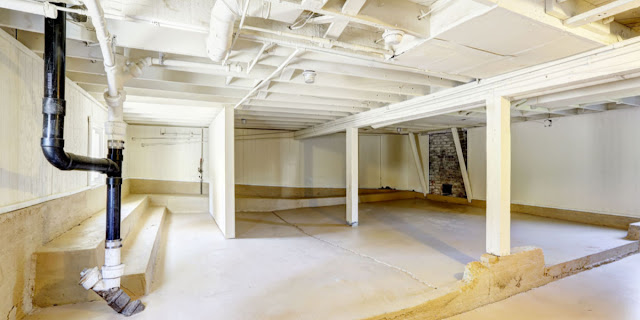 |
| Basement Remodeling |
At some time, every homeowner realises
that they require extra space. Where can I find additional room? You can expand
outward and build an addition, but this will cost a lot of money. You can also
glance inward.
A basement is available
space if you own a property with one. For most houses, the basement serves as a
storage area for unwanted items or as a location for important utilities like
the furnace and water heater. There's no reason you can't sweep out the rubbish
and turn the space into a comfortable family room, video room, auxiliary
bedroom, gym, or anything you choose.
However, before you can make your
basement into a habitable place, you'll need to consider certain fundamentals.
Below are the basement remodeling tips.
1. Get
Moisture Under Control
It's all about moisture when it comes
to completing a basement. You can build almost anything in the basement if you
can successfully regulate the dampness. Even amenities that are generally not
allowed in basements, such as wall-to-wall carpeting, can be added without
difficulty.
You may not be able to complete your
basement if there is a lot of dampness. Most basements are disqualified due to
moisture. Water-lock paint can be used to solve minor moisture issues. Special
caulking for this purpose can be used to seal cracks. Dehumidifiers pull wet
air in and catch a significant amount of it before it condenses on the basement
walls and ceiling.
2. Make a
decision about the basement's use.
Basements are not suitable for all
purposes due to their unique nature. Basements are typically cold, dark, and
confining. If you're converting your basement into an apartment for a
sun-loving family member, you'll have a hard time fitting in enough windows and
sun tubes. Basements, on the other hand, are great for other uses that don't
require much light. For optimal performance, home movie theatres rely on low
lighting and dampened acoustics.
3. Make wall
system planning a top priority.
Basement walls are built for a variety
of purposes. They improve the aesthetic appeal of the room. They facilitate the
installation of receptacles and make it easier to run electrical lines.
Furthermore, barriers help to regulate temperature.
In a finished basement, walls are
frequently of no structural value. Because of the inherent moisture issues,
steel studs are a good choice because they do not decay and each stud has exact
dimensions. Basements, too, benefit from foam insulation. Mold can grow on
fibreglass insulation.
4. Develop an
Electrical Plan
To comply with electrical code, you
must provide a specified number of electrical outlets when renovating your
basement. If a bathroom is included in the basement design, it will require the
same electrical work as a bathroom on the upper floors: a lighting circuit, a
circuit for the bathroom exhaust fan, and GFCI outlets.
Comments
Post a Comment